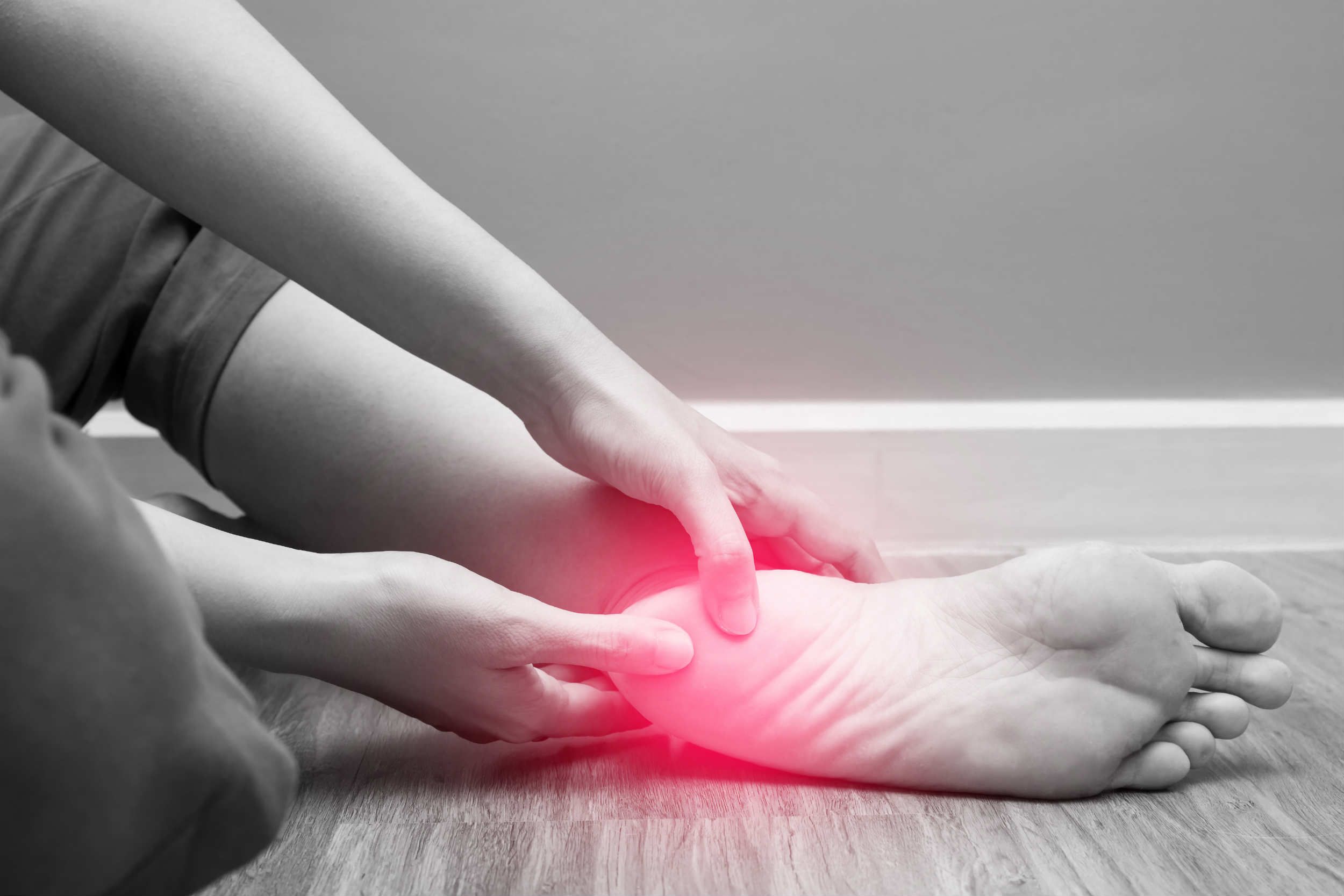
Understanding Ankle Instability & Ankle Injuries in Calgary
Ankle pain is often due to an ankle sprain but can also be caused by ankle instability, arthritis, gout, tendonitis, fracture, nerve compression (tarsal tunnel syndrome), infection and poor structural alignment of the leg or foot. Ankle pain can be associated with swelling, stiffness, redness, and warmth in the involved area. The pain is often described as an intense dull ache that occurs upon weight bearing and ankle motion. At North Hill Foot & Ankle Clinic, we offer treatment for ankle instability and ankle injuries in Calgary. Contact us today.
Initial treatment may consist of rest, ice, elevation, and immobilization, but may also include nonsteroidal anti-inflammatory drugs (NSAIDs) such as ibuprofen, physical therapy, and cortisone injection. Dr. Crosby can best determine the cause of the ankle pain and appropriate treatment options.
Chronic Ankle Instability
Chronic ankle instability in Calgary is a condition characterized by a recurring “giving way” of the outer (lateral) side of the ankle. This condition often develops after repeated ankle sprains. Usually the “giving way” occurs while walking or doing other activities, but it can also happen when you’re just standing. Many athletes, as well as others, suffer from chronic ankle instability.
People with chronic ankle instability often complain of:
- A repeated turning of the ankle, especially on uneven surfaces or when participating in sports
- Persistent (chronic) discomfort and swelling
- Pain or tenderness
What Causes It?
Chronic ankle instability usually develops following an ankle sprain that has not adequately healed or was not rehabilitated completely. When you sprain your ankle, the connective tissues (ligaments) are stretched or torn. The ability to balance is often affected. Proper rehabilitation is needed to strengthen the muscles around the ankle and “retrain” the tissues within the ankle that affect balance.
Repeated ankle sprains often cause—and perpetuate—chronic ankle instability. Having an ankle that gives way increases your chances of spraining your ankle repeatedly. Each subsequent sprain leads to further weakening (or stretching) of the ligaments—resulting in greater instability and the likelihood of developing additional problems in the ankle.
Ankle Tendon Injuries: What Are Peroneal Tendons?
A tendon is a band of tissue that connects a muscle to a bone. In the foot, there are two peroneal tendons. They run side by side behind the outer ankle bone. One peroneal tendon attaches to the outer part of the midfoot, while the other tendon runs under the foot and attaches near the inside of the arch. The main function of the peroneal tendons is to stabilize the foot and ankle and protect them from sprains.
Types of Peroneal Tendon Injuries
Peroneal tendon injuries may be acute (occurring suddenly) or chronic (developing over a period of time). They most commonly occur in individuals who participate in sports that involve repetitive ankle motion. In addition, people with higher arches are at risk for developing peroneal tendon injuries. Following are the basic types of peroneal tendon injuries:
1. Tendonitis is an inflammation of one or both tendons. The inflammation is caused by activities involving repetitive use of the tendon, overuse of the tendon or trauma (such as an ankle sprain). Symptoms of tendonitis include:
- Pain
- Swelling
- Warmth to the touch
2. Acute tears are caused by repetitive activity or trauma. Immediate symptoms of acute tears include:
- Pain
- Swelling
- Weakness or instability of the foot and ankle
As time goes on, these tears may lead to a change in the shape of the foot, in which the arch may become higher.
3. Degenerative tears (tendonosis) are usually due to overuse and occur over long periods of time—often years. In degenerative tears, the tendon is like taffy that has been overstretched until it becomes thin and eventually frays. Having high arches also puts you at risk for developing a degenerative tear. The signs and symptoms of degenerative tears may include:
- Sporadic pain (occurring from time to time) on the outside of the ankle
- Weakness or instability in the ankle
- An increase in the height of the arch
4. Subluxation occurs when one or both tendons have slipped out of their normal position. In some cases, subluxation is due to a condition in which a person is born with a variation in the shape of the bone or muscle. In other cases, subluxation occurs following trauma, such as an ankle sprain. Damage or injury to the tissues that stabilize the tendons (retinaculum) can lead to chronic tendon subluxation. The symptoms of subluxation may include:
- A snapping feeling of the tendon around the ankle bone
- Sporadic pain behind the outside ankle bone
- Ankle instability or weakness
Early treatment of a subluxation is critical, since a tendon that continues to sublux (move out of position) is more likely to tear or rupture. Therefore, if you feel the characteristic snapping, see a podiatrist immediately.
If you experience ankle pain or instability contact Dr. Crosby for an assessment today.
Courtesy of the American College of Foot and Ankle Surgeons
